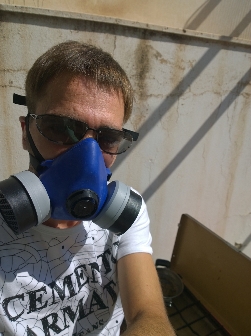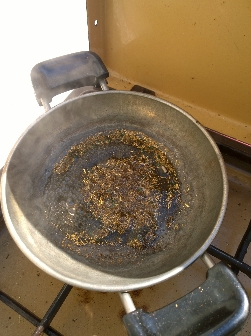Hi Everyone,
How are you all doing?
Well, I have been a bit impatient, as I was expecting the instant precipitaion but the solution was not concentrated enough to get the gold precipitated upon the addition of SMB, I found the gold powder at the bottom of the beaker when I saw it now after almost 12 hours,
Jason Recliner, it is not the photo of incineration, the comment section of that photo states hcl bath. There was no reaction upon addition of Sulfamic Acid, please tell me that is that not a sign of a completely neutralized nitirc acid?
Goran, I added 35 ml of hcl 30% and 4 ml of nitric acid 60%. Additional water was added upon rinsing the filter and the beaker, I have consumed a lot of water in rinsing them I presume. Or what else I did wrong to increase the solution?
Geo, thank you for your kind suggestions, I really appreciate your suggestions at it's elite level, you are right Geo, I did not heat the solution when I was adding Sulfamic Acid, thank you for clarifying it, I have learnt one more step that I should heat the solution while addition of Sulfamic Acid, but why there was no reaction when I added Sulfamic Acid? Was that a sign of a completely neutralized nitric?
Jon, It was my false assumption to assume that may be the nitric was not been neutralized upon Sulfamic Acid's addition, Imdid not add more as there was no reaction, I'm learning the details of te whole process, all of the senior members of this forum have been so kind to give their suggestions in order to get me on the right tract of this chemical process. I'm thankfull to all of them. I did not dissolve the Sulfamic Acid in water either. But my mistake was to use more than enough water to rinse the filter and the beaker when I was filtering gold chloride solution, that was why the solution exceeded the required amount of it.
I checked the remaining solution with stannous chloride after when I saw the gold was precipitated, I am going to take a picture and post it here to show you guys, the colour is sligtly yellow tinted but transparent and the gold powder (which I'm boiling in hcl after water rinse) is of dark infact very dark colour after precipitation. Let's see which colour it would come up in after this wash which Harold suggested us to wash the gold powder.
Thank you everyone for your very much informative suggestions, I appreciate them all, so nice of you all.
Alvi


























































